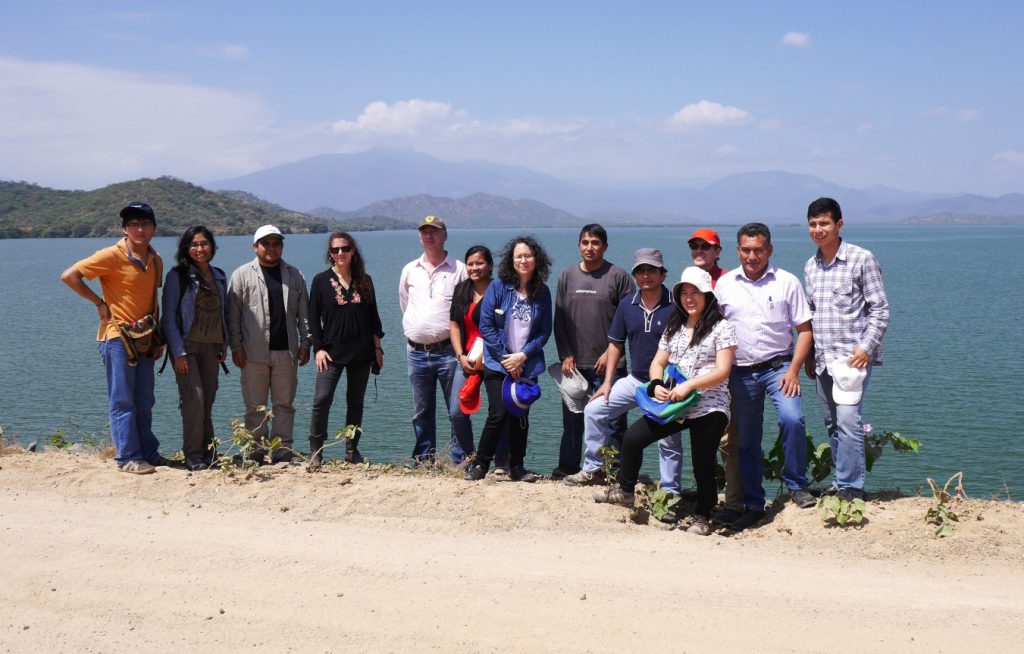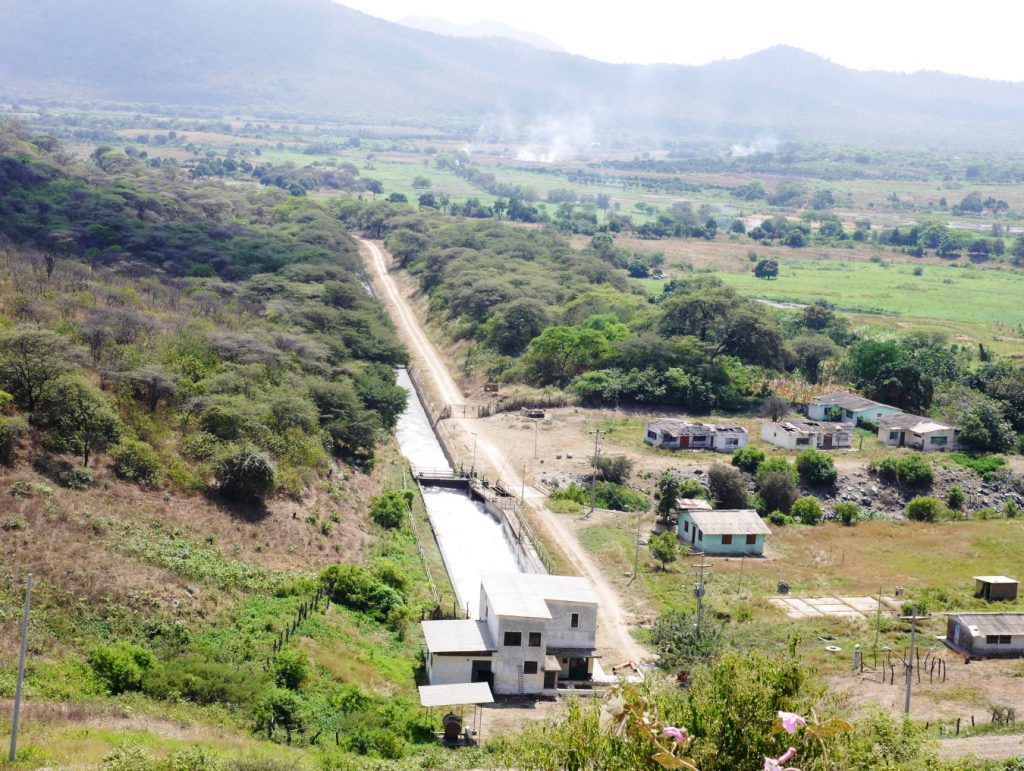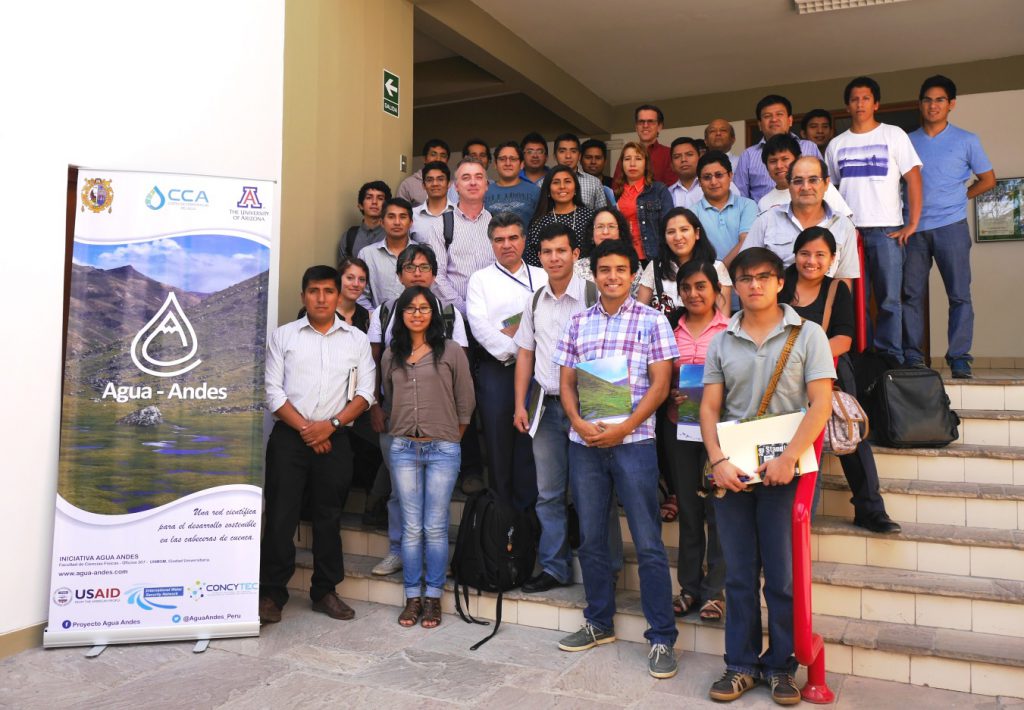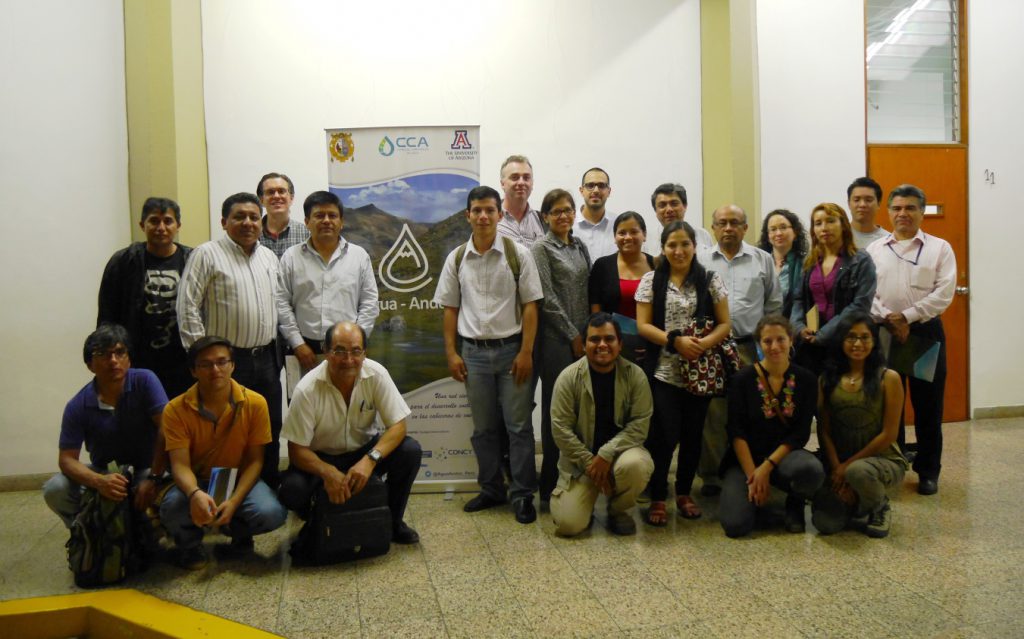
San Lorenzo Valley, Piura, Peru
Scientists, stakeholders and decision makers met on 14-15 July 2015 to discuss and debate food, water, energy and environmental security in San Lorenzo Valley, a highly productive agricultural basin with headwaters in Ecuador, and the Piura region, Peru. The effort was coordinated by Dr. Bram Willems and his team of graduate students through the International Water Security Network and the PEER project, “Strengthening resilience of Andean river basin headwaters facing global change,” under the umbrella of the AQUASEC Center of Excellence in Water Security, in collaboration with Nature and Culture International (NCI) and the University of Piura (UDEP).
Piura is a region known for its ‘unusual coexistence’ of activities, from small to industrial scale agriculture, immense mining operations coexisting with small villages, from artisans to multi-national corporations, local commerce to international trade with Ecuador. Economic pressures have challenged the resilience of the region’s population, its natural resources, and its fragile ecosystems, including the highland wetlands, called páramos, and the fog forests, both severely threatened by deforestation and mining.

Researchers from the University of Arizona (UA) and the Agua-Andes initiative of the San Marcos National University of Peru (UNMSM), and members of NCI joined together on the first day for a field trip to the local irrigation and water users association (Junta de Usuarios del Sector Hidráulico Menor San Lorenzo, JUSHSAL) in a town called Villa Cruceta, Tambogrande. Rossi Taboada and Megan Mills-Novoa, graduate students at UNMSM and UA respectively, are conducting fieldwork on water security in the region.
The organisation’s president, David Cruz, welcomed the teams and presented an historical review of irrigation in the valley, including an initiative called the Quiroz–Chira Water Fund. This member-supported fund finances reforestation programs and productive projects in Piura’s highlands. After a discussion about the current water challenges in the valley, the team visited the San Lorenzo Reservoir and the valve house.

Seminar in Piura
In the afternoon, the teams participated in a workshop called, “Nexus approach and science–government–civil society integration” at UDEP. The goal was to produce synergies and to establish a joint working agenda for the dialogues to follow. Participants in the workshop included scientists from the UA, UNMSM, UDEP, Piura National University, and Pedro Ruiz Gallo University; decision makers from Piura’s regional government and the Jequetepeque–Zarumilla Autonomous Water Authority; and NGO and civil society representatives from NCI, Peasant Research and Promotion Center (CIPCA), the Water Development Network, and Alternativa, Center for Social Research and Education, all involved in Piura’s sustainable development.
During the workshop, Christopher Scott (UA) presented the nexus approach as a conceptual framework together with some of its applications. Fabiola Yeckting (an IWSN team member at UNMSM) discussed the current context in the north of Peru with a focus on the Piura region. The presentations opened discussion on the nexus framework in the face of the global-change challenges in the region, and the openings that persist on the road to reach (or near) sustainable development.

civil society integration’
A seminar on “Water–food–energy–environmental security: Sustainable development challenges for Piura in the context of global change,” was held at UDEP on the second day. The goal was to discuss and communicate the importance of integrated approaches in sustainable development and open dialogues among scientists and practitioners.
The seminar was organised around three discussion tables, each addressing aspects of the water, food, energy and environmental security nexus.
The first table, co-led by Jorge Reyes (UDEP), Bram Willems, and Christopher Scott, developed a general panorama of the nexus approach, with examples from concurrent and related projects from the academic field. The second table, led by Ricardo Pineda (CIPCA), Fabiola Yeckting, and Redy Risco (SINERSA, an energy company) concentrated on debate in the Piura region. The third table, led by Alexander More (NCI), Cesar Talledo (Piura Regional Government), and Rodolfo Rodríguez (UDEP), aimed to integrate action and research proposals for regional sustainable development.
The diverse team of scientists, students, decision makers and stakeholders recognised the importance of dialogue spaces and the dissemination of scientific knowledge focused on current regional dynamics. A key theme of the seminar was the importance of environmental conservation in order to reach sustainable development in the region, in the country, and in the world.

